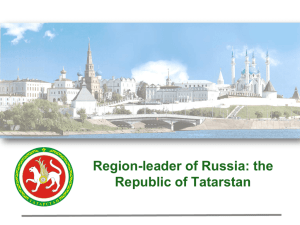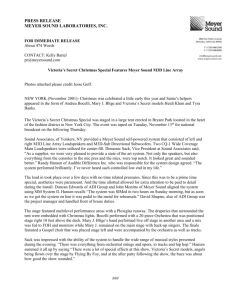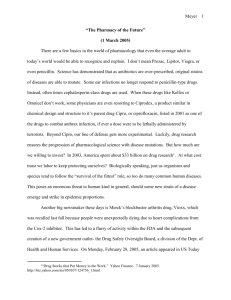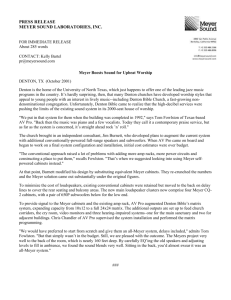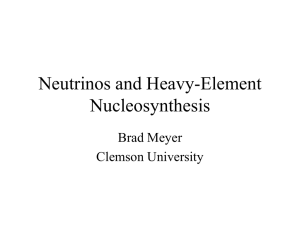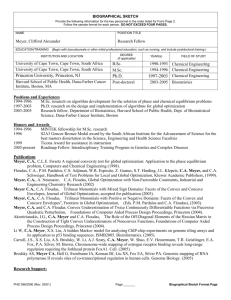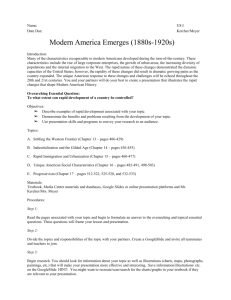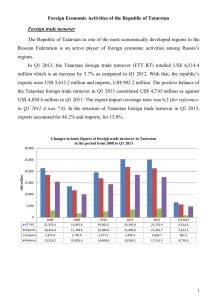Pax Ethnica: Where and How Diversity Succeeds
advertisement
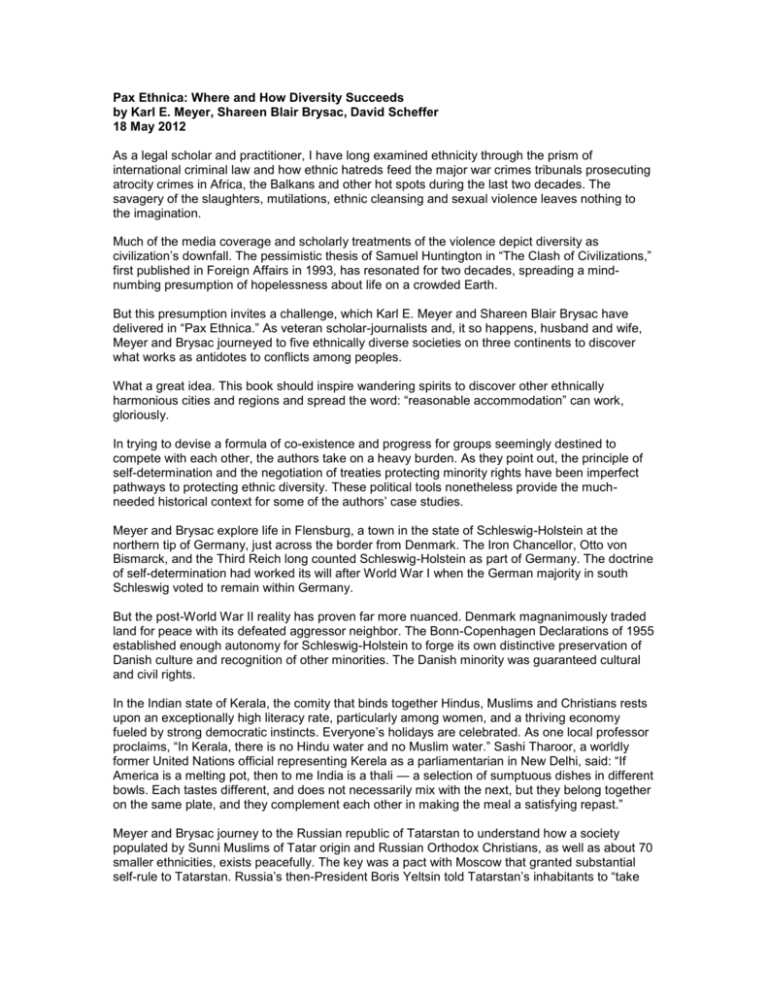
Pax Ethnica: Where and How Diversity Succeeds by Karl E. Meyer, Shareen Blair Brysac, David Scheffer 18 May 2012 As a legal scholar and practitioner, I have long examined ethnicity through the prism of international criminal law and how ethnic hatreds feed the major war crimes tribunals prosecuting atrocity crimes in Africa, the Balkans and other hot spots during the last two decades. The savagery of the slaughters, mutilations, ethnic cleansing and sexual violence leaves nothing to the imagination. Much of the media coverage and scholarly treatments of the violence depict diversity as civilization’s downfall. The pessimistic thesis of Samuel Huntington in “The Clash of Civilizations,” first published in Foreign Affairs in 1993, has resonated for two decades, spreading a mindnumbing presumption of hopelessness about life on a crowded Earth. But this presumption invites a challenge, which Karl E. Meyer and Shareen Blair Brysac have delivered in “Pax Ethnica.” As veteran scholar-journalists and, it so happens, husband and wife, Meyer and Brysac journeyed to five ethnically diverse societies on three continents to discover what works as antidotes to conflicts among peoples. What a great idea. This book should inspire wandering spirits to discover other ethnically harmonious cities and regions and spread the word: “reasonable accommodation” can work, gloriously. In trying to devise a formula of co-existence and progress for groups seemingly destined to compete with each other, the authors take on a heavy burden. As they point out, the principle of self-determination and the negotiation of treaties protecting minority rights have been imperfect pathways to protecting ethnic diversity. These political tools nonetheless provide the muchneeded historical context for some of the authors’ case studies. Meyer and Brysac explore life in Flensburg, a town in the state of Schleswig-Holstein at the northern tip of Germany, just across the border from Denmark. The Iron Chancellor, Otto von Bismarck, and the Third Reich long counted Schleswig-Holstein as part of Germany. The doctrine of self-determination had worked its will after World War I when the German majority in south Schleswig voted to remain within Germany. But the post-World War II reality has proven far more nuanced. Denmark magnanimously traded land for peace with its defeated aggressor neighbor. The Bonn-Copenhagen Declarations of 1955 established enough autonomy for Schleswig-Holstein to forge its own distinctive preservation of Danish culture and recognition of other minorities. The Danish minority was guaranteed cultural and civil rights. In the Indian state of Kerala, the comity that binds together Hindus, Muslims and Christians rests upon an exceptionally high literacy rate, particularly among women, and a thriving economy fueled by strong democratic instincts. Everyone’s holidays are celebrated. As one local professor proclaims, “In Kerala, there is no Hindu water and no Muslim water.” Sashi Tharoor, a worldly former United Nations official representing Kerela as a parliamentarian in New Delhi, said: “If America is a melting pot, then to me India is a thali — a selection of sumptuous dishes in different bowls. Each tastes different, and does not necessarily mix with the next, but they belong together on the same plate, and they complement each other in making the meal a satisfying repast.” Meyer and Brysac journey to the Russian republic of Tatarstan to understand how a society populated by Sunni Muslims of Tatar origin and Russian Orthodox Christians, as well as about 70 smaller ethnicities, exists peacefully. The key was a pact with Moscow that granted substantial self-rule to Tatarstan. Russia’s then-President Boris Yeltsin told Tatarstan’s inhabitants to “take all the sovereignty you can swallow.” And they have done so while continuing their tradition of interfaith marriages. In 1990, Tatarstan’s Supreme Soviet unanimously issued a rights-rich “Declaration of State Sovereignty” that was approved in a popular referendum. Tatarstan entered into a bilateral treaty with Russia that granted the republic some foreign-affairs powers and further solidified its autonomous character. There remains a repressive environment for human rights and press freedom in Tatarstan, so not all is well there. Politics is dominated by a ruling elite. But the republic did not experience the fate of Chechnya, which declared independence following the collapse of the Soviet empire and then suffered defeat in a devastating war with Yeltsin’s army. Marseille, a luckily situated seaside metropolis with mythical and historical traditions, survived France’s violent autumn of 2005 relatively unscathed. The young people of the city proudly described themselves as “Marseillais” above all other identities and joined with others to project a great sense of optimism. There are at least 27 ethnic groups in Marseille, but what distinguishes the city “is that succeeding migrant communities settled in the city’s central area, so that newcomers have long been clearly visible near administrative and political headquarters.” Europeans returning from the Algerian morass in the early 1960s tested the city’s tolerance and strengthened it for the future. Meyer and Brysac journeyed across the East River to Queens, N.Y. The mantra “Nobody lives in Queens” is patently false, and they discovered a metropolis devoid of a city center but remarkably embracing diversity in 62 branches of the Queens Public Library, where cultural exploration is the norm. Streetwise New Yorkers find their most engaging home among the 2.3 million residents of a borough where 138 languages are spoken. “Pax Ethnica” has one unfortunate weakness. I expected maps of the five destinations to enlighten the reader with a geographical focus. Cartography is repeatedly short-changed in contemporary books, and it deserves a revival. Meyer and Brysac conclude with a set of guidelines for ethnically harmonious societies. My favorite is “Fear not the persistence of minority tongues.” Could someone please whisper that in the ear of politicians across this incredibly diverse land as they campaign to preserve E pluribus unum? © The Washington Post Company
